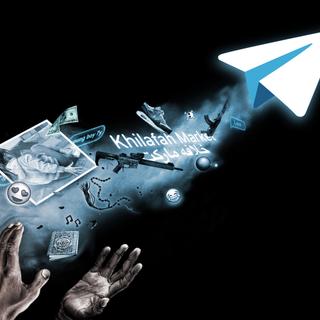


How Telegram was used by the Islamic State to trade slaves
InvestigationA market selling Yazidi hostages hosted on the messaging app grew with impunity across the Islamic State 'caliphate' from 2014 until its fall in 2019. In addition to the charges already brought against platform boss Pavel Durov in France, complicity in crimes against humanity could be added.
Through deserted streets dotted with the carcasses of burnt-out cars, an old sedan speeds toward the Sinjar Mountains, on the north-western edge of Iraq. In the back of the vehicle is a 5-year-old Yazidi girl, who has just been snatched from the clutches of the Islamic State (IS) group, in an operation that lasted almost a week. July 2016 marks the end of a two-year ordeal for little Imane (the name has been changed).
A survivor of the massacres perpetrated on August 3, 2014 by IS against Yazidis on their ancestral lands, she was captured and enslaved by the men in black. First in Mosul, the Iraqi capital of the "caliphate" proclaimed by Abu Bakr Al-Baghdadi, where the little girl was put up for sale at $6.000. Then in IS's Syrian stronghold of Raqqa, where she was offered at $4,000 on June 22, 2016. The sale offer, which Le Monde consulted, stated that Imane "wets the bed." The ad was published on a virtual market where child hostages of IS were auctioned off by the jihadists – boys destined to become child soldiers from the age of 7, and girls reduced to sex slaves. This sprawling market, hosted on the online messaging platform Telegram, proliferated with impunity across the "caliphate," until its fall in 2019.
Throughout, one man has been tracking the human trafficking trade, both online and in the field: Bahzad Farhan. This 30-year-old Yazidi hails from the Iraqi province of Dohuk, where the Lalesh temple is nestled – the spiritual home of his religious community, persecuted down the ages as Satan worshippers by Christian and Muslim fundamentalists and doomed to "purification" by jihadists. According to a field survey, based on systematic censuses, published in 2017 by PLOS, an online scientific publisher, around 3,100 Yazidis died in the August 2014 offensive. Of this total, 1,400 were executed and 1,700 perished of starvation in the appalling conditions in the Sinjar Mountains. At the time of these estimates, 2,500 of the 6,800 Yazidis taken hostage were still missing.
Born into a wealthy family of spirits merchants, scattered between Iraq and Germany, Farhan is a quiet force. But his unwavering smile hides an equally unrelenting determination. Faced with the genocide of his own people, he put aside his business to devote himself to the IS's Yazidi hostages – to rescue them, or to identify perpetrators and document their crimes.
"There is no written record of the massacres we have suffered throughout history," explained Farhan. "Yazidi memory has been passed down orally [for 6,000 years]. This time, I wanted us to keep tangible evidence of the unspeakable." He counts the dead and missing, collects testimonies from survivors, gathers clues, makes contact with hostages and, sometimes, exfiltrates them from the "caliphate". In 2017, he founded the Kinyat organization and joined forces with the International Federation for Human Rights (FIDH) in Paris. Together, in 2018, they published an edifying report on the sexual crimes committed against Yazidis by the IS's foreign – notably French – recruits.
You have 83.28% of this article left to read. The rest is for subscribers only.
